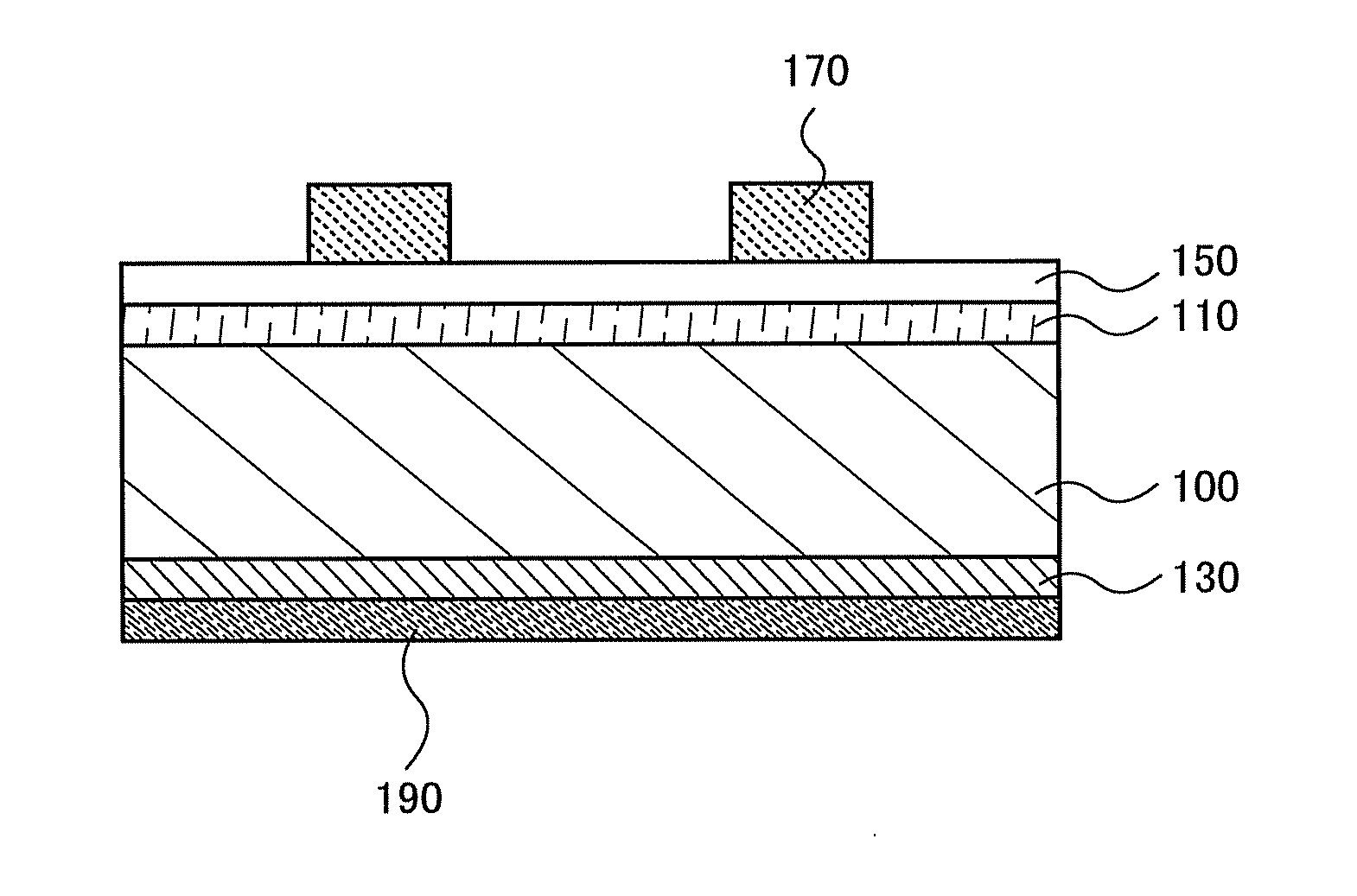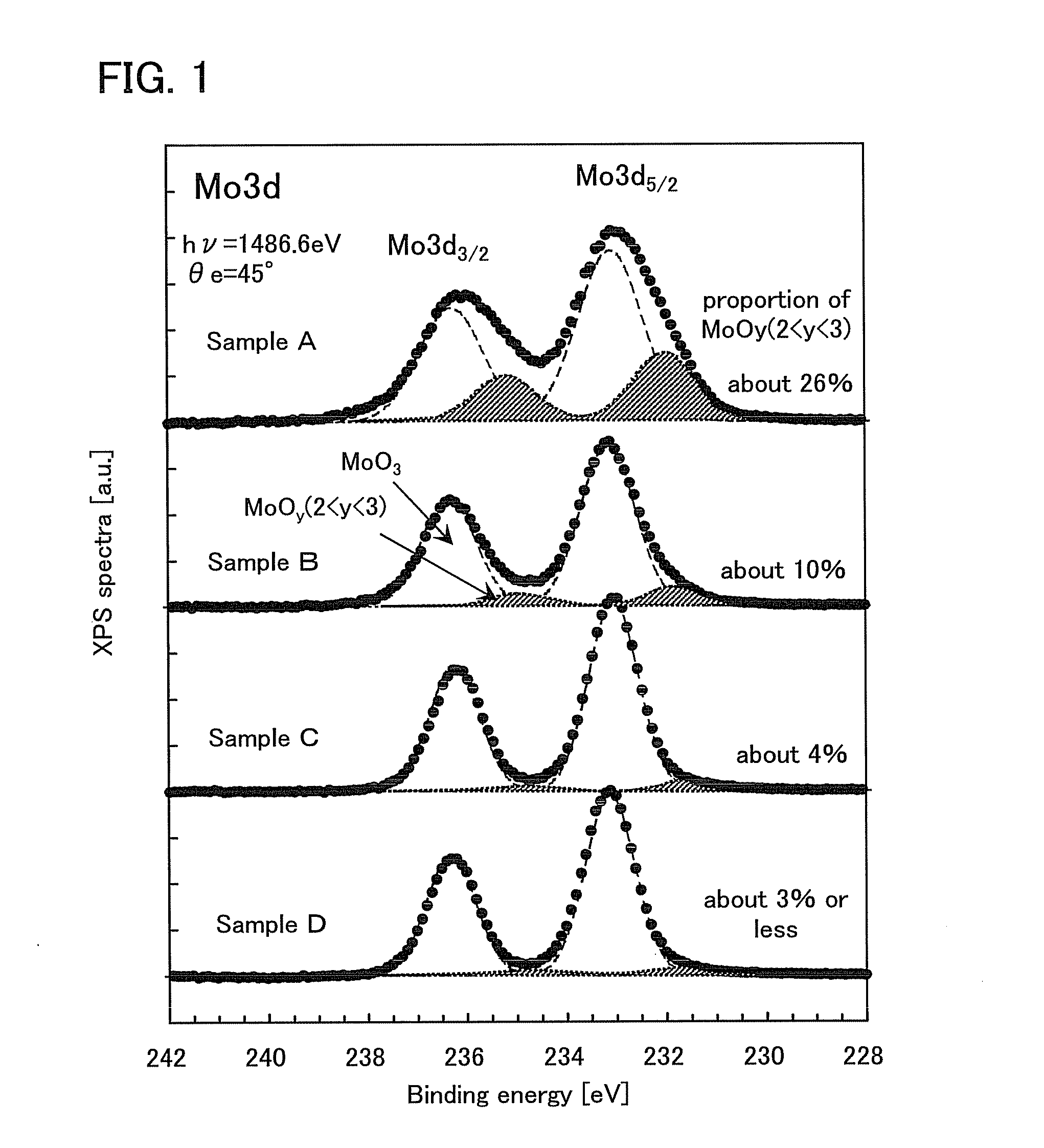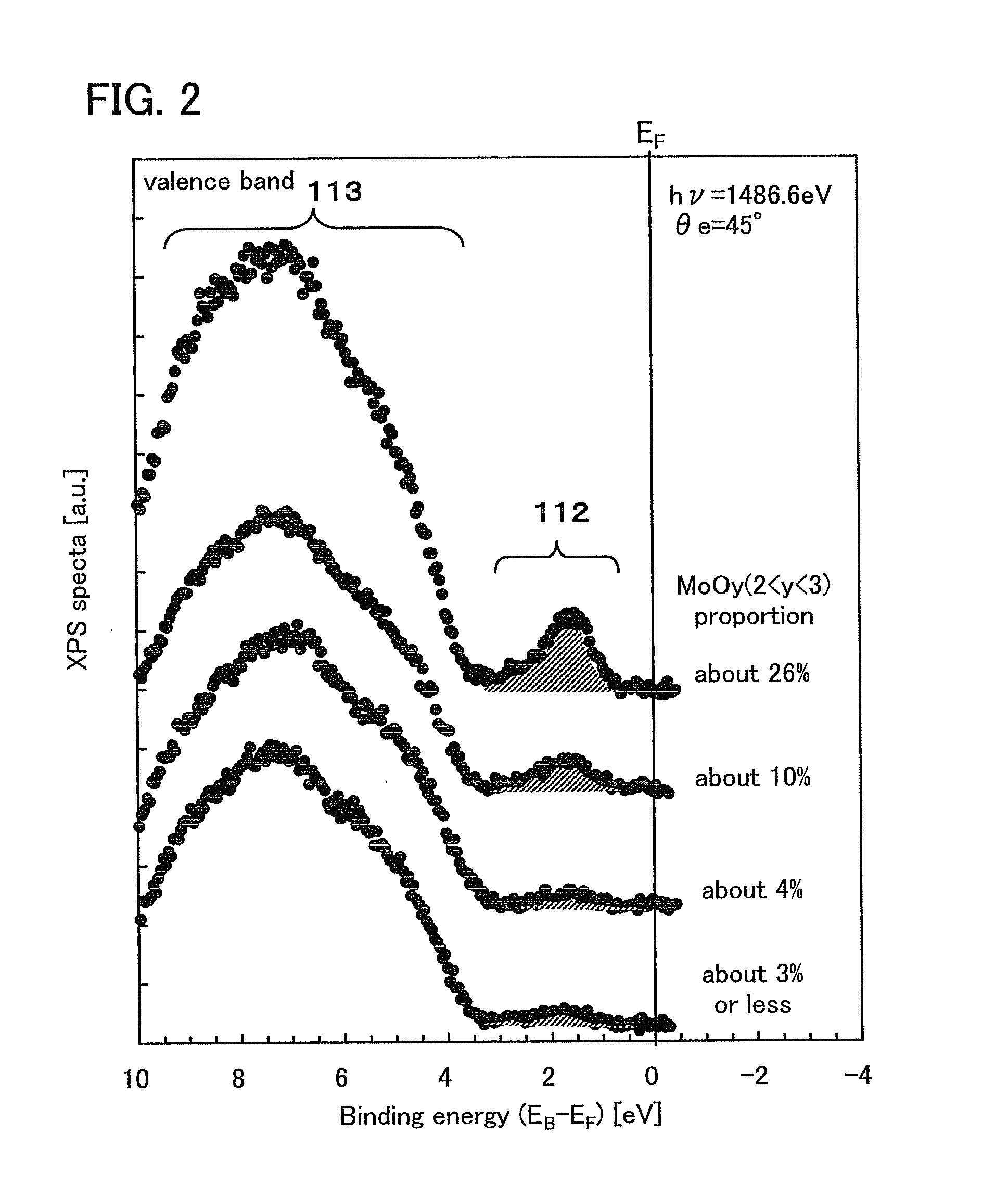P-Type Semiconductor Material and Semiconductor Device
a semiconductor material and semiconductor technology, applied in the direction of semiconductor devices, basic electric elements, electrical appliances, etc., can solve the problems of reducing the output current of power generation, reducing the output current by contraries, and unable to obtain the output current as high, so as to improve the p-n heterojunction interface, reduce light absorption loss, and facilitate photocurrent carrier extraction
- Summary
- Abstract
- Description
- Claims
- Application Information
AI Technical Summary
Benefits of technology
Problems solved by technology
Method used
Image
Examples
embodiment 1
[0086]In this embodiment, an oxide semiconductor material that is one embodiment of the disclosed invention is described with reference to FIG. 1, FIG. 2, FIG. 3, and FIG. 5.
[0087]As the oxide semiconductor material of one embodiment of the present invention, molybdenum oxide can be used. Molybdenum oxide is preferable since it is stable even in air, has a low hygroscopic property, and is easily treated. Further, oxides of metals that belong to Group 4 to Group 8 of the periodic table can also be used. Specific examples thereof include vanadium oxide, niobium oxide, tantalum oxide, chromium oxide, tungsten oxide, manganese oxide, and rhenium oxide.
[0088]As molybdenum oxide of the oxide semiconductor material, a material (hereinafter referred to as MoO3+MoOy (23) and molybdenum oxide (hereinafter referred to as MoOy (2<y<3)) having an intermediate composition between molybdenum dioxide and molybdenum trioxide are mixed is preferably used.
[0089]The conductivity of MoO3+MoOy (2y (23+Mo...
embodiment 2
[0113]In this embodiment, a structure of a photoelectric conversion device of one embodiment of the disclosed invention and a manufacturing method thereof are described with reference to FIGS. 6A and 6B, FIGS. 7A and 7B, FIGS. 8A to 8C, and FIGS. 9A to 9C.
[0114]First, a structure of a photoelectric conversion device that is one embodiment of the present invention is described.
[0115]FIG. 6A shows an example of a schematic cross-sectional view of the photoelectric conversion device that is one embodiment of the present invention. The photoelectric conversion device includes a silicon substrate 100; an oxide semiconductor layer 110 over one surface of the silicon substrate; an impurity region 130 over the other surface of the silicon substrate; a light-transmitting conductive film 150 over the oxide semiconductor layer 110; a first electrode 170 in contact with the light-transmitting conductive film; and a second electrode 190 in contact with the impurity region 130. Note that the firs...
embodiment 3
[0153]In this embodiment, a photoelectric conversion device whose structure is different from the structures of the photoelectric conversion devices in Embodiment 2, and a method for manufacturing the photoelectric conversion device is described with reference to FIG. 10, FIG. 11, FIG. 12, FIG. 13, FIGS. 14A to 14C, and FIGS. 15A to 15C. Note that detailed description of portions which are similar to those of Embodiment 2 is omitted in this embodiment.
[0154]FIG. 10 is a cross-sectional view of a photoelectric conversion device that is one embodiment of the present invention. The photoelectric conversion device includes a silicon substrate 200; a first silicon semiconductor layer 201, an oxide semiconductor layer 210, a light-transmitting conductive film 250, and a first electrode 270 which are formed over one surface of the silicon substrate 200; and a second silicon semiconductor layer 202, a third silicon semiconductor layer 203, and a second electrode 290 which are formed over th...
PUM
 Login to View More
Login to View More Abstract
Description
Claims
Application Information
 Login to View More
Login to View More - R&D
- Intellectual Property
- Life Sciences
- Materials
- Tech Scout
- Unparalleled Data Quality
- Higher Quality Content
- 60% Fewer Hallucinations
Browse by: Latest US Patents, China's latest patents, Technical Efficacy Thesaurus, Application Domain, Technology Topic, Popular Technical Reports.
© 2025 PatSnap. All rights reserved.Legal|Privacy policy|Modern Slavery Act Transparency Statement|Sitemap|About US| Contact US: help@patsnap.com



